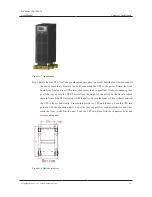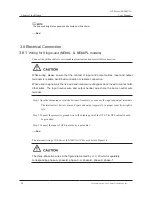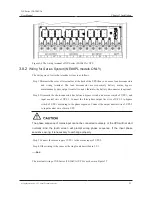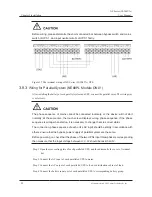
28
All rights reserved ©N1 Critical Technologies, Inc.
NE Series (20-30kVA)
User Manual
Chapter 4 Operation Guide
No.
Check item
8
Check if the safe identification of AC power distribution unit is complete.
9
Check if the cable connection is tight.
10
Check if the battery is connected in proper polarity and sequence.
11
Check if the cable identification is correct.
12
Check if the wiring is neat, and if the cable connection is in accordance with the
electrical codes.
13
Check if the equipment installation and wiring is advantageous to the transformation,
expansion and maintenance of the system in future.
4.1.2
UPS Testing
Test UPS: close the battery switch, mains switch, bypass switch, and start the UPS. After the UPS
working stably and stay in mains inverting to output, disconnect the mains switch to simulate the mains
outage, the UPS will turn to battery inverting to output, at the same time, the buzzer beeps slowly; then
disconnect the battery switch to simulate the status of protection for battery low-voltage, the UPS will
turn to bypass output, and the buzzer beeps constantly to alarm.
4.2 Precautions for Operating UPS
Before starting the UPS, check whether the load is proper. The load must not exceed the rated
output power of the UPS. Otherwise, the UPS may turn into overload protection status.
Do not use the <ON> and <OFF> switch on the UPS panel as the power supply switches of loads.
Do not start the UPS frequently.
When the mains supply is off, start the generator firstly if the UPS needs to be connected to it. Do
not connect the UPS to the generator before the generator works stable. Otherwise, the UPS or the
load may get damaged. Switch off the UPS before switching off the generator.
Prior to the first startup of UPS, the power and UPS needs to be checked. Only with passing the
examination, power the UPS. If UPS hasn’t been used for a long time, it also needs to be checked
before startup. Operation procedure is showed in Figure4-1.
















































